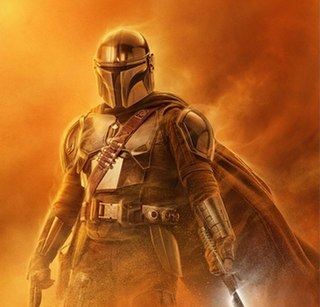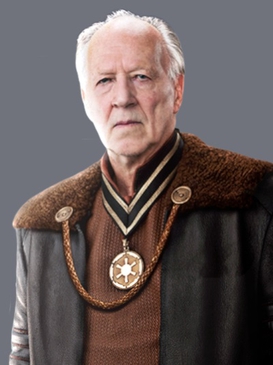
A TPS report ("test procedure specification") is a document used by a quality assurance group or individual, particularly in software engineering, that describes the testing procedures and the testing process.

A TPS report ("test procedure specification") is a document used by a quality assurance group or individual, particularly in software engineering, that describes the testing procedures and the testing process.
The official definition and creation is provided by the Institute of Electrical and Electronics Engineers (IEEE) as follows:
IEEE 829 – Test Procedure Specification
The Test Procedures are developed from both the Test Design and the Test Case Specification. The document describes how the tester will physically run the test, the physical set-up required, and the procedure steps that need to be followed. The standard defines ten procedure steps that may be applied when running a test. [1]
Its use in popular culture increased after the comedic 1999 film Office Space . In the movie, multiple managers and coworkers inquire about an error that protagonist Peter Gibbons (played by Ron Livingston) makes in omitting a cover sheet to send with his "TPS reports". It is used by Gibbons as an example that he has eight different bosses to whom he directly reports. According to the film's writer and director Mike Judge, the abbreviation stood for "Test Program Set" in the movie. [2]
After Office Space, "TPS report" has come to connote pointless, mindless paperwork, [3] and an example of "literacy practices" in the work environment that are "meaningless exercises imposed upon employees by an inept and uncaring management" and "relentlessly mundane and enervating". [4]

Software testing is the act of checking whether software satisfies expectations.

Atmospheric entry is the movement of an object from outer space into and through the gases of an atmosphere of a planet, dwarf planet, or natural satellite. There are two main types of atmospheric entry: uncontrolled entry, such as the entry of astronomical objects, space debris, or bolides; and controlled entry of a spacecraft capable of being navigated or following a predetermined course. Technologies and procedures allowing the controlled atmospheric entry, descent, and landing of spacecraft are collectively termed as EDL.

Office Space is a 1999 American satirical black comedy film written and directed by Mike Judge. It satirizes the work life of a typical 1990s software company, focusing on a handful of individuals weary of their jobs. It stars Ron Livingston, Jennifer Aniston, Gary Cole, Stephen Root, David Herman, Ajay Naidu, and Diedrich Bader.

An Easter egg is a message, image, or feature hidden in software, a video game, a film, or another — usually electronic — medium. The term used in this manner was coined around 1979 by Steve Wright, the then-Director of Software Development in the Atari Consumer Division, to describe a hidden message in the Atari video game Adventure, in reference to an Easter egg hunt.

William "Bill" Lumbergh is a fictional character, who appeared initially in the Milton animated shorts, and later was portrayed by Gary Cole in the 1999 film Office Space as the film's main antagonist. A caricature of corporate management, Lumbergh is a division vice president of the Texas-based software company Initech, and serves as the main antagonist of the film. He drives a blue Porsche 911 SC with a vanity license plate "MY PRSHE". He wears formal, solid-color day dress shirts with Winchester collars and suspenders with a belt — a fashion faux pas — as well as an MIT college class ring. According to his Initech employee's personnel file, Lumbergh graduated from MIT with a BS in physics.

"Adrift" is the second episode of the second season of Lost and the 27th episode overall. The episode was directed by Stephen Williams and written by Steven Maeda and Leonard Dick. It first aired on September 28, 2005, on the American Broadcasting Company. In the episode, flashbacks depict Michael Dawson's struggles for the custody of his son Walt Lloyd. The realtime events show Michael and Sawyer, who have just had their raft destroyed, becoming hostile towards each other as they drift back to shore, while Kate Austen and John Locke enter the mysterious hatch and encounter Desmond Hume.
Verification and validation are independent procedures that are used together for checking that a product, service, or system meets requirements and specifications and that it fulfills its intended purpose. These are critical components of a quality management system such as ISO 9000. The words "verification" and "validation" are sometimes preceded with "independent", indicating that the verification and validation is to be performed by a disinterested third party. "Independent verification and validation" can be abbreviated as "IV&V".
"Eggtown" is the fourth episode of the fourth season and 76th episode overall of the ABC's serial drama television series Lost. It was aired on February 21, 2008, on ABC in the United States and on CTV in Canada. It was written by supervising producer Elizabeth Sarnoff and script coordinator Greggory Nations and directed by co-executive producer Stephen Williams. This is the first episode written by Nations.
Computer humour, also known as hacker humour, is humour on the subject of computers or their users.

Cara Dune is a fictional character in the Star Wars franchise, appearing in the first two seasons of the Disney+ television series The Mandalorian. Portrayed by actress and former mixed martial artist Gina Carano, the character is a former Rebel shock trooper who became a mercenary after the Galactic Civil War, and is later employed as a marshal of the New Republic. A highly trained and battle-hardened special forces warrior, Cara is skilled in the use of weaponry, hand-to-hand combat, and battle tactics, and has an intense hatred of the Galactic Empire for its destruction of her homeworld, Alderaan. Carano described Cara as a loner who is having trouble readjusting to society following her career as a soldier.

Din Djarin, known as The Mandalorian, or Mando for short, is a fictional character in the Star Wars franchise, who appears as the titular protagonist of the Disney+ television series The Mandalorian and also appears in its spin-off The Book of Boba Fett. Orphaned as a young child, The Mandalorian was adopted into the Mandalorian culture and trained as a warrior, later becoming a bounty hunter and taking the title of his people as a sobriquet. The character is rarely seen without his silver, beskar helmet, which he is forbidden by creed to remove publicly.

The Client is a fictional character in the Star Wars franchise who appears in three episodes of the first season of the Disney+ television series The Mandalorian. He is a mysterious, unnamed leader in the former Galactic Empire and subordinate of Moff Gideon, who plays a key role in setting the show's story into motion by hiring the bounty hunter known as "The Mandalorian" to retrieve a "50-year-old", yet infantile alien dubbed "The Child".

Migs Mayfeld is a fictional character in the Star Wars franchise who appears in the Disney+ television series The Mandalorian. He is a former Imperial sharpshooter turned mercenary who leads a crew in an attempt to rescue a prisoner from a New Republic prison transport ship. His team includes the show's protagonist, "The Mandalorian", with whom he repeatedly clashes and ultimately betrays. The Mandalorian outsmarts him, resulting in Mayfeld's arrest and imprisonment, though he is later released so that he can aid the Mandalorian's efforts to rescue Grogu. As a result, the character evolves from a minor antagonist to an ally of the Mandalorian, with whom he eventually makes amends during their mission.

The Book of Boba Fett is an American space Western television miniseries created by Jon Favreau for the streaming service Disney+. It is part of the Star Wars franchise and a spin-off from The Mandalorian, taking place in the same timeframe as that series and its other interconnected spin-offs after the events of the film Return of the Jedi (1983). The Book of Boba Fett follows bounty hunter Boba Fett from The Mandalorian and other Star Wars media as he establishes himself as the new crime lord of Jabba the Hutt's former territory.

Din Grogu, colloquially referred to as Baby Yoda, is a character from the Star Wars Disney+ original television series The Mandalorian and The Book of Boba Fett. He is a toddler member of the same species as the Star Wars characters Yoda and Yaddle, with whom he shares a strong ability in the Force. In the series, the protagonist known as "the Mandalorian" is hired to track down and capture Grogu for a remnant of the fallen Galactic Empire, but instead, he becomes his adoptive father and protects him from the Imperials. The character's real name was not revealed until "Chapter 13: The Jedi", which also explained that Grogu was raised at the Jedi Temple on Coruscant during the Clone Wars. Before this, the character's official name, used in subtitles and captions, was "the Child". At the end of "Chapter 24: The Return", he is given the name Din Grogu after being formally adopted by the Mandalorian, whose family name is "Din".